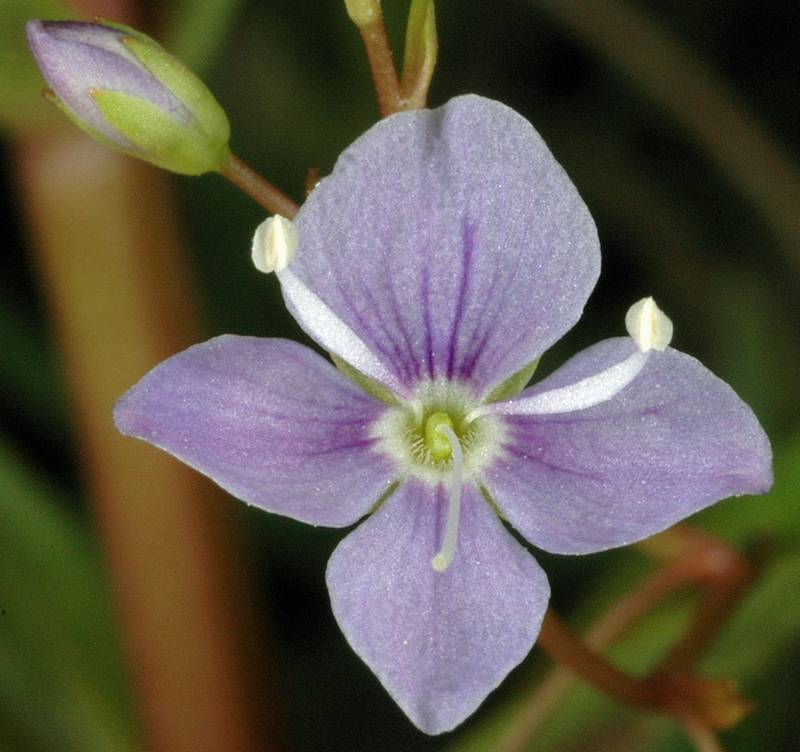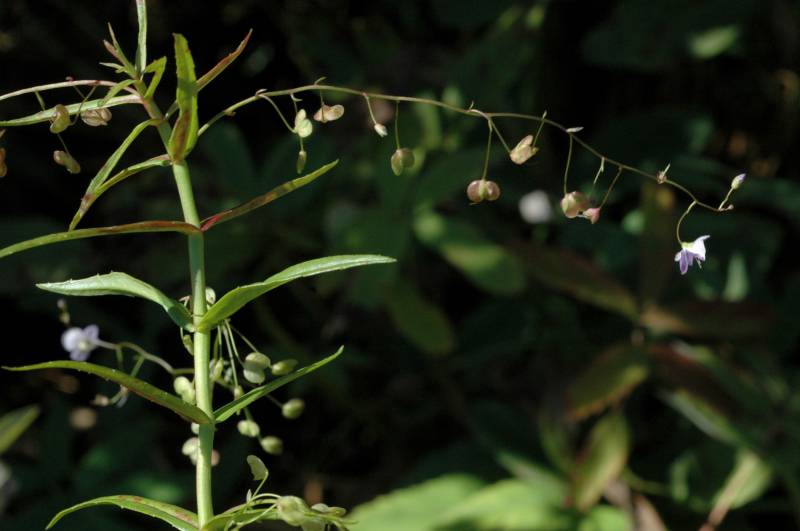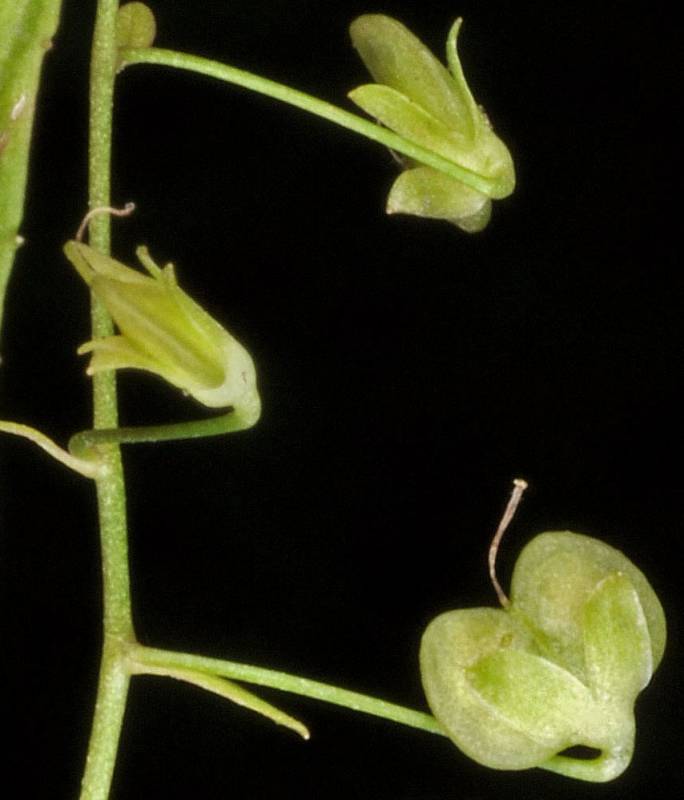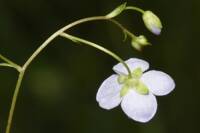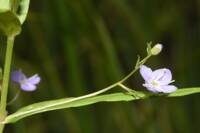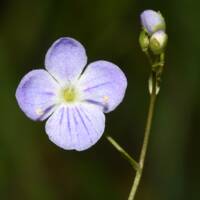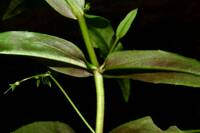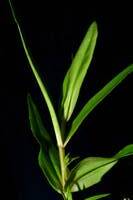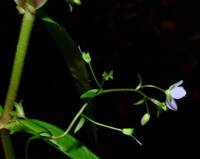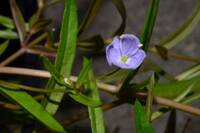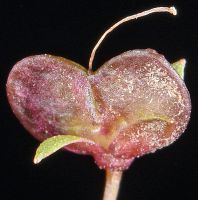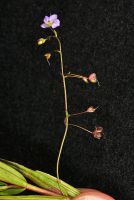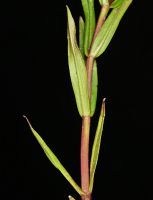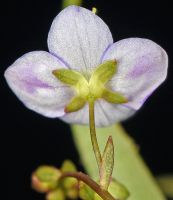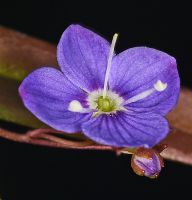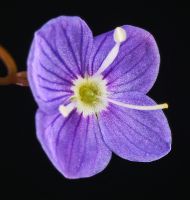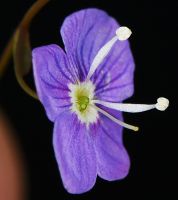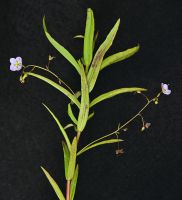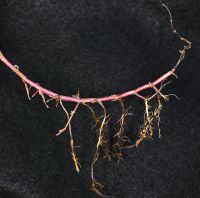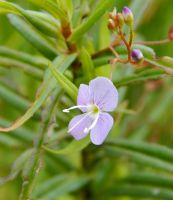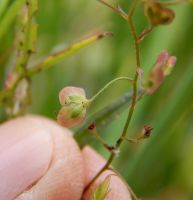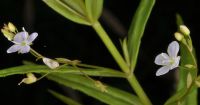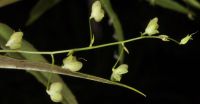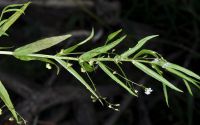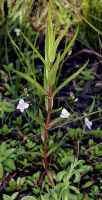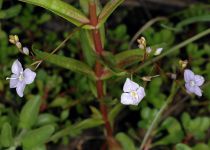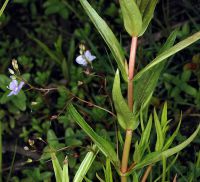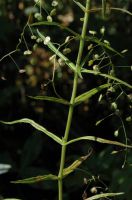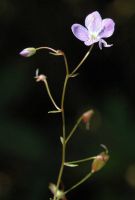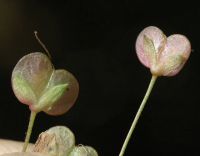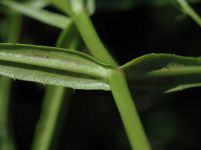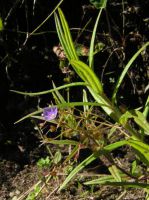Distribution: Occurring on both sides of the Cascades crest in Washington; Alaska to California, east to the Rocky Mountains, northern Great Plains, Great Lakes region, and eastern North America; Eurasia
Habitat: Wet places and open water, from the lowlands to middle elevations in the mountains.
Flowers: May-September
Origin: Native
Growth Duration: Perennial
Conservation Status: Not of concern
Pollination: Bees, flies
Usually glabrous perennial from shallow, creeping rhizomes, the stem erect to ascending, 1-4 dm. long.
Leaves all opposite, sessile, linear to lanceolate, 2-8 cm. long and 2-15 mm. wide, usually entire.
Inflorescence of open racemes on long peduncles arising from the leaf axils, each raceme 5-20 flowered, the flowers on filiform pedicels 6-17 mm. long; sepals 4; corolla bluish, 6-10 mm. wide, rotate, 4-lobed, the upper lobe the largest; style 2-4 mm. long; stamens 2.
Capsule flattened, 2.5-4 mm. high, noticeably wider than high, broadly notched.
Publication: Sp. Pl. 1: 12. 1753.
PNW Herbaria: Specimen records of Veronica scutellata in the Consortium of Pacific Northwest Herbaria database
WA Flora Checklist: Veronica scutellata checklist entry
OregonFlora: Veronica scutellata information
E-Flora BC: Veronica scutellata atlas page
CalPhotos: Veronica scutellata photos

